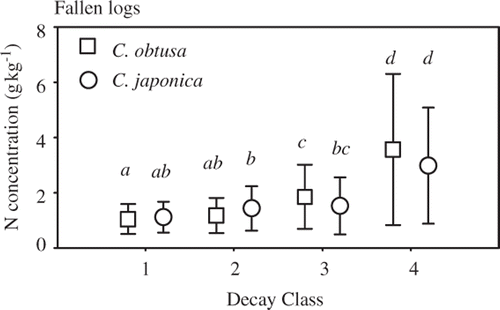Figures & data
Figure 1. Locations of the sampling prefectures for Chamaecyparis obtusa (Sieb. et Zucc.) Endl. (squares) and Cryptomeria japonica D. Don (circles).
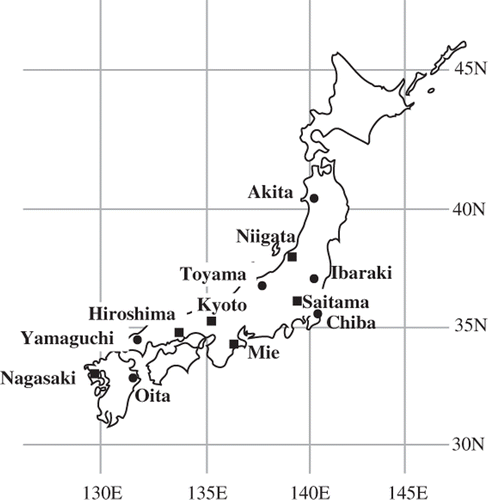
Table 1. Location, management history, and climate conditions of the study stands in 12 prefectures
Table 2. Criteria determining the decay classes of fallen logs
Figure 2. Wood density of fallen logs of Chamaecyparis obtusa (Sieb. et Zucc.) Endl. (squares) and Cryptomeria japonica D. Don (circles) in decay classes 1–4. Bars are standard deviations. Different letters indicate significant differences (P < 0.05).
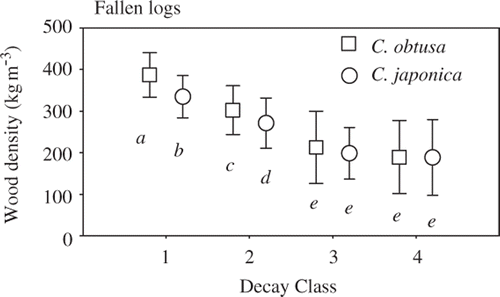
Table 3. Results of a two-way analysis of variance for the wood density of fallen logs by decay class and tree species, and their interaction
Figure 3. Wood density of fallen logs changed with log diameter in decay class 1 (filled circles), decay class 2 (open circles) and decay class 3 (triangles) of Chamaecyparis obtusa (Sieb. et Zucc.) Endl. and Cryptomeria japonica D. Don.
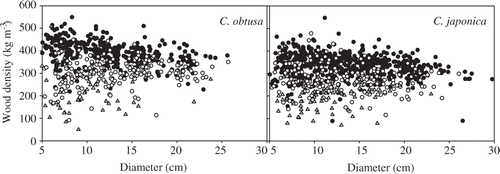
Table 4. Results of an analysis of covariance for the wood density of fallen logs by region and log diameter, and their interaction, in each decay class and tree species
Figure 4. Fallen log carbon concentrations of Chamaecyparis obtusa (Sieb. et Zucc.) Endl. (squares) and Cryptomeria japonica D. Don (circles) in decay classes 1–4. Bars are sample standard deviations. Different letters indicate significant differences (P < 0.05).
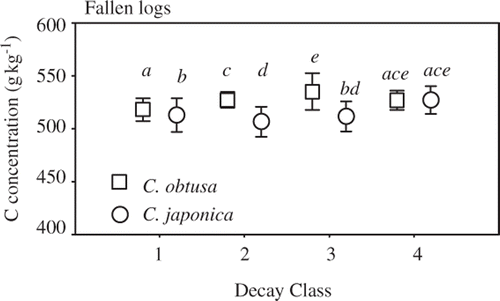
Table 5. Results of a two-way analysis of variance for the carbon concentrations of fallen logs by decay class and tree species, and their interaction
Figure 5. Concentrations of (a) carbon and (b) nitrogen changed with diameter in decay class 1 (filled circles), decay class 2 (open circles) and decay class 3 (triangles) of Chamaecyparis obtusa (Sieb. et Zucc.) Endl. and Cryptomeria japonica D. Don.
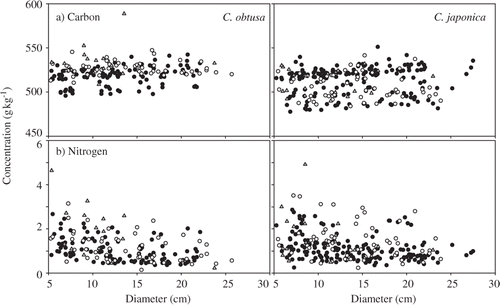
Table 6. Results of an analysis of covariance for the carbon concentrations of fallen logs by region and log diameter, and their interaction, in each decay class and tree species
Figure 6. Fallen log nitrogen concentrations of Chamaecyparis obtusa (Sieb. et Zucc.) Endl. (squares) and Cryptomeria japonica D. Don (circles) in decay classes 1–4. Bars are sample standard deviations. Different letters indicate significant differences (P < 0.05).
